Building a Cost-Optimization Feedback Loop: From QoE Metrics to Infrastructure Adjustments
Key Takeaways
- Establishing a continuous feedback loop involving monitoring, analysis, and action can lead to significant optimization of CDN infrastructure.
- Identifying relevant QoE metrics like startup time, rebuffering ratio, and latency is crucial for the feedback loop.
- Data from various sources including client-side SDKs, server-side logs, and third-party monitoring tools can be collected and analyzed for insights.
- Continuous monitoring of the impact of optimization actions on QoE metrics can help drive ongoing improvements in performance and cost-efficiency.
In the realm of content delivery networks (CDNs), performance optimization is crucial for delivering the best user experience. However, maintaining an optimal balance between cost and performance is often challenging. One solution to this conundrum lies in establishing a robust feedback loop that seamlessly integrates QoE metrics, performance data analysis, and targeted optimization actions. This approach not only boosts CDN performance but also helps control costs. Now, let’s dive into the intricacies of building a cost-optimization feedback loop in QoE metrics and infrastructure adjustments.
The Feedback Loop Framework: Metrics, Analysis, Action
The first step in building a cost-optimization feedback loop is to establish a continuous cycle of monitoring Quality of Experience (QoE) metrics. These metrics, depending on your specific use case, could include startup time, rebuffering ratio, and latency. For instance, startup time, which measures the delay between a user’s request and the start of content playback, significantly impacts user engagement and retention rates.
The next step is to collect QoE data from various sources such as client-side SDKs, server-side logs, and third-party monitoring tools. This aggregated data can then be analyzed to identify trends, anomalies, and areas for improvement in content delivery performance. For example, a high rebuffering ratio indicates frequent playback interruptions due to insufficient buffer, which can lead to a poor user experience and increased viewer churn.
Once the data is analyzed, the insights can be translated into actionable steps for optimizing CDN configuration. These steps might involve adjusting cache settings or fine-tuning origin server performance. Advanced features like prefetching and dynamic content acceleration can also be implemented based on these insights. For instance, optimizing cache configuration based on QoE data can maximize cache hit ratio and minimize origin server load, thereby improving performance and cost-efficiency.
The final, and perhaps most crucial step in this feedback loop, is to continuously monitor the impact of these optimization actions on QoE metrics. This ongoing monitoring and iteration on the feedback loop can drive sustained improvements in content delivery performance and cost-efficiency. For example, end-to-end latency, which encompasses the time taken for data to travel from the origin server to the end-user’s device, can be continuously monitored and optimized for smoother playback and reduced viewer disengagement.
Key QoE Metrics to Monitor: Startup Time, Rebuffering, Latency
In our ongoing journey to perfect the cost-optimization feedback loop in QoE metrics and infrastructure adjustments, let’s now turn our attention to the key QoE metrics you should monitor. These crucial metrics include startup time, rebuffering ratio, and end-to-end latency.
Startup Time
The startup time is a critical QoE metric that measures the delay between a user’s request and the start of content playback. Prioritizing monitoring of startup time is crucial — a faster startup time leads to higher user engagement and lower abandonment rates. After all, in today’s fast-paced digital world, who has the time or patience for slow-loading content?
Rebuffering Ratio
Next up is the rebuffering ratio. This metric quantifies the frequency and duration of playback interruptions due to insufficient buffer. As you might suspect, a high rebuffering ratio negatively impacts user experience and increases the likelihood of viewer churn. Tracking the rebuffering ratio helps you identify these interruptions in playback and take the necessary steps to rectify them.
End-to-End Latency
Another critical QoE metric to monitor is end-to-end latency, which encompasses the time taken for data to travel from the origin server to the end-user’s device. Lower latency ensures smoother playback and reduces the risk of viewer disengagement. The faster your content reaches your users, the better their experience will be — it’s as simple as that.
Average Bitrate and CDN Features
Beyond these metrics, you should also measure the average bitrate and adapt bitrate selection algorithms to strike a balance between video quality and network conditions. Doing so allows you to optimize for the best possible viewer experience while minimizing bandwidth costs. But that’s not all. You must also evaluate the impact of specific CDN features, such as request routing, cache hit ratio, and origin offload, on QoE metrics. This evaluation will help you identify areas for further optimization and cost savings. As you can see, monitoring QoE metrics is not just about improving performance — it’s also a crucial part of your cost-optimization strategy.
The key to successful CDN strategy is to understand the delicate balance between cost and performance. As the folks at Streaming Media point out, it’s not just about choosing the right CDN, but also about understanding and measuring QoE to ensure you’re getting the most bang for your buck.
Adjusting Infrastructure Based on QoE Insights
Now that we have identified the key QoE metrics to monitor, how do we use these insights to drive infrastructure adjustments? Let’s dive into the crucial actions you need to take to effectively implement a cost-optimization feedback loop in QoE metrics and infrastructure adjustments.
Informed Strategic Decisions
Firstly, it’s essential to utilize QoE insights to inform strategic decisions about your CDN infrastructure. This might involve adding or removing points of presence (PoPs) in specific geographic regions to improve performance for your target audiences. Remember, your CDN infrastructure should not be set in stone — it should evolve based on data-driven insights to meet your users’ needs better.
Cache Configuration Optimization
Next, optimize your cache configuration based on QoE data. This process entails adjusting cache expiration policies, cache key generation, and cache hierarchy to maximize cache hit ratio and minimize origin server load. By doing so, you ensure that your CDN infrastructure works efficiently, thereby improving user experience and reducing costs.
Automated Scaling Mechanisms
The world of digital content delivery is fast-paced and unpredictable. To stay ahead, implement automated scaling mechanisms that respond to real-time changes in QoE metrics. These mechanisms dynamically allocate resources to handle traffic spikes, ensuring consistent performance during peak demand. This way, you’re always prepared to deliver a stellar user experience, no matter the circumstances.
Evaluating Cost-Performance Trade-offs
As with any business decision, it’s important to evaluate the cost-performance trade-offs of different CDN pricing models. This might include commit-based pricing, pay-as-you-go, or hybrid models. Ensure that your infrastructure decisions align with your business objectives and budget constraints. Remember, the most expensive CDN isn’t necessarily the best one for your business — it’s about finding a solution that offers the best value for your specific needs.
Collaboration with CDN Providers
Lastly, don’t forget the value of collaboration. Work closely with CDN providers to leverage their expertise and insights in infrastructure optimization. This collaboration might involve exploring opportunities for bespoke solutions or customized configurations that address unique QoE requirements. After all, two heads are often better than one — especially when it comes to optimizing your CDN infrastructure.
In the grand scheme of implementing a cost-optimization feedback loop in QoE metrics and infrastructure adjustments, each of these steps plays a crucial role. It’s not just about monitoring the right metrics — it’s about taking the right actions based on the insights you glean from these metrics. By doing so, you can continuously improve your CDN infrastructure, deliver a superior user experience, and effectively manage costs.
Automating Feedback Loops with AI and Real-Time Analytics
As we’ve established the importance of adjusting infrastructure based on QoE insights, let’s delve into the next step in creating a cost-optimization feedback loop in QoE metrics and infrastructure adjustments: automation. By leveraging AI and real-time analytics, you can streamline and enhance your feedback loop for maximum efficiency and effectiveness.
AI-Powered Anomaly Detection
Firstly, consider implementing AI-powered anomaly detection algorithms. These advanced tools continuously monitor QoE metrics and proactively identify performance issues. This real-time oversight enables rapid remediation of problems, thereby minimizing the impact on end-users. In other words, you can fix issues before they become major headaches for your users.
Machine Learning for Future Predictions
Next, leverage machine learning models to predict future QoE trends based on historical data. This forward-thinking approach allows for proactive infrastructure optimizations that anticipate and address potential performance bottlenecks. So, instead of constantly playing catch-up, you’re staying ahead of the game.
Real-Time Analytics Dashboards
To enhance your understanding of QoE metrics, utilize real-time analytics dashboards. These tools provide engineering teams with a unified view of content delivery performance across different geographies, devices, and network conditions. With this comprehensive overview, you can make more informed decisions about where and how to optimize your CDN infrastructure.
Integration with Infrastructure Management Tools
Integrate QoE data with infrastructure management tools and automation frameworks. This integration enables the creation of self-optimizing CDN configurations that dynamically adapt to changing performance requirements and cost constraints. Essentially, you’re creating a CDN infrastructure that knows how to optimize itself.
Continuous Refinement of AI Models
Finally, don’t set and forget your AI models. Continuously refine these models and analytics algorithms based on feedback from engineering teams and evolving business needs. This ensures that your automation efforts remain aligned with organizational objectives and drive measurable improvements in cost-efficiency and user experience.
Implementing AI and real-time analytics in your feedback loop is not just a nice-to-have, but a must-have in today’s fast-paced digital world. By automating your feedback loop, you can free up valuable time and resources, improve your CDN infrastructure, and ultimately deliver a better user experience.
Now, are you ready to take the next step in your journey towards a more efficient and effective CDN infrastructure?
Remember, by establishing a robust feedback loop that connects QoE metrics, data analysis, and infrastructure optimization, you’re not just improving your content delivery performance. You’re effectively managing costs, proactively addressing performance issues, and making data-driven decisions that maximize the value of your CDN investments. As the streaming landscape continues to evolve, this approach empowers you to stay ahead of the curve, delivering exceptional user experiences while ensuring the long-term sustainability and profitability of your content delivery operations.
So, what will be your first step in automating your feedback loop with AI and real-time analytics?
About CacheFly
Beat your competition with faster content delivery, anywhere in the world! CacheFly provides reliable CDN solutions, fully tailored to your business.
Want to talk further about our services? We promise, we’re human. Reach us here.
Product Updates
Explore our latest updates and enhancements for an unmatched CDN experience.
Book a Demo
Discover the CacheFly difference in a brief discussion, getting answers quickly, while also reviewing customization needs and special service requests.
Free Developer Account
Unlock CacheFly’s unparalleled performance, security, and scalability by signing up for a free all-access developer account today.
CacheFly in the News
Learn About
Work at CacheFly
We’re positioned to scale and want to work with people who are excited about making the internet run faster and reach farther. Ready for your next big adventure?




